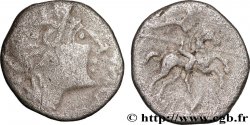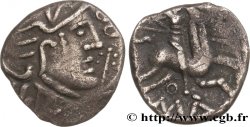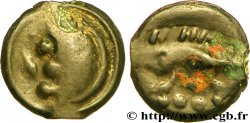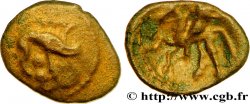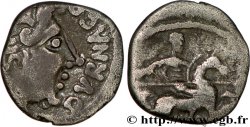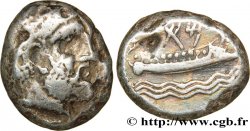E-auction 91-46669 - bga_339471 - GALLIA - RHONE VALLEY Denier au cavalier DVRNACOS / AVSCRO
You must signin and be an approved bidder to bid, LOGIN TO BID. Accounts are subject to approval and the approval process takes place within 48 hours. Do not wait until the day a sale closes to register. Clicking on « bid » constitutes acceptance of the terms of use of cgb.fr private e-auctions.
Bids must be placed in whole Euro amounts only. The sale will start closing at the time stated on the item description; any bids received at the site after the closing time will not be executed. Transmission times may vary and bids could be rejected if you wait until the last second. For further information ckeck the E-auctions F.A.Q.
NO BUYER'S FEE.
NO BUYER'S FEE.
| Estimate : | 150 € |
| Price : | 41 € |
| Maximum bid : | 41 € |
| End of the sale : | 12 January 2015 15:17:00 |
| bidders : | 7 bidders |
Type : Denier au cavalier DVRNACOS / AVSCRO
Date: c. 75 AC.
Metal : silver
Diameter : 14 mm
Orientation dies : 5 h.
Weight : 1,69 g.
Rarity : R1
Coments on the condition:
Agréable monnaie, sur un flan court, avec un droit bien centré mais un revers assez incomplet sous le cheval. Patine grise
Obverse
Obverse legend : DVRNACOS.
Obverse description : Tête casquée de Rome à droite.
Reverse
Reverse legend : [AVSCRO].
Reverse description : Cavalier galopant à droite, le manteau flottant sur l'épaule, tenant une lance de la main droite.
Commentary
La légende DVRNACOS est assez bien visible au droit, mais AVSCRO (la plus courante associée à cet avers ?) est complètement hors flan eau revers.
The legend DVRNACOS is quite clearly visible on the obverse, but AVSCRO (the most common one associated with this obverse?) is completely off-flag on the reverse.
The legend DVRNACOS is quite clearly visible on the obverse, but AVSCRO (the most common one associated with this obverse?) is completely off-flag on the reverse.








 Report a mistake
Report a mistake Print the page
Print the page Share my selection
Share my selection Ask a question
Ask a question Consign / sell
Consign / sell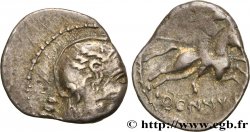
 Full data
Full data

